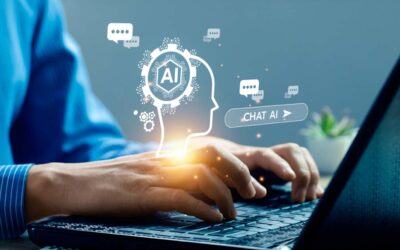Interview with the Authors: Givens and Slutskaya, “Transforming Technical Services…”
Lauren Hays
Marlee Givens and Sofia Slutskaya co-wrote Transforming Technical Services Through Training and Development to be released by ALA Publications this fall. My interview with them is below.
1. Please briefly summarize Transforming Technical Services Through Training and Development
Technical services departments are increasingly expected to do more with less, whether because of shrinking budgets, staff turnover, a lack of visibility, or insufficient understanding of their work on the part of administrators. Finding a balance between meeting service demands and developing staff knowledge and skills is challenging, just as it is challenging to develop training programs and find experienced trainers and motivate staff to learn new skills. This edited collection of chapters written by library practitioners examines training and development methods from instructional design, Lean management, Training Within Industry (TWI) and other models, and it offers practical tools and case studies to help technical services managers to create training materials, organize and assess training programs, motivate staff to engage in learning and create learning culture that incorporates formal and informal staff development into the everyday work and uses learning to continuously improve service delivery.
2. Why did you decide to write this book?
We had worked together on a major cross-training project at our library, where the library leadership had brought together several traditional technical services departments (cataloging, acquisitions and e-resources) along with course reserves, interlibrary loan, and digitization, to form a new unit. This was part of a series of projects, following a review of workflows, an analysis of tasks and skills for each functional area, and the creation of documentation for basic functions in each area. Subject matter experts developed and delivered training based on the documentation, and the training involved both classroom instruction and hands-on practice. As co-project managers, we combined our skills and experience with instructional design and training (Marlee) and technical services (Sofia), and we learned the Training Within Industry (TWI) approach from our program manager. At the end of the project, we thought it might be interesting to talk about our experience with colleagues in the American Library Association. We found that the technical services professionals we met were having to train their staff constantly, whether due to organizational changes (turnover, mergers, retirements, etc.) or technical ones (RDA, BIBFRAME, Alma, etc.), and they were hungry for practical approaches to designing, delivering and organizing their training.
3. What are the two main challenges you see in technical services? and 4. Why did you decide to focus on the importance of training and development for addressing challenges in technical services?
We see change (organizational and technical) as a top challenge in technical services. It is impossible to run technical services in the 21st century without training. We heard this from our discussion group table at Creative Ideas in Technical Services Interest Group 2018, from the audience at our program on transforming the technical services workforce at ALA 2019, and from the virtual audience at our program on technical services learning organization: transformation through training and development at ALA 2020. The other challenge is time: while technical services leaders and employees know that training is important, it still feels like an extra endeavor, something that must be done outside of regular work, and not part of the regular structure of the work. Our cross-training project was certainly like that, where we were asked to organize several classroom sessions in a short time in order to close out the overarching project of reorganizing the department. But we saw greater success with the more informal hands-on work that staff members did alongside each other, learning from each other and passing along their own knowledge. We knew that other libraries were likely having success with integrating training into the rest of their technical services work, and we wanted to learn from them as well.
4. The book includes methods such as Training Within Industry (TWI) and lean management. Will you briefly describe these and how librarians can apply them?
We learned about Training Within Industry (TWI) approach during a major cross-training project we co-managed. TWI is a program created by the U.S. Department of War as a response to the need for skilled workers during World War II. We were absolutely fascinated by its history, but also amazed at how relevant the idea of interdependency between training, practicing on the job and creating good documentation (job aids) is to technical services in libraries. We also loved the fact that original TWI not just successfully trained 1.6 million people between 1941 and 1945 but also significantly improved employee morale. The other TWI idea that resonated with us and can be successfully implemented was “training the trainer.” Giving technical services employees skills and tools to train others in the department can be a key to the successful learning culture.
5. You also wrote about instructional design methods. Is there one method you rely on the most?
One of the key components of TWI is its approach to job instruction. In this approach, instructors learn to break down jobs into clearly defined steps. This is also one of the principles of instructional design. There are many instructional design models used across various industries, but they do share some common characteristics. Many are iterative processes and involve analysis and evaluation steps that inform learning design and assessment. The majority of instructional design methods require development of learning outcomes and training plans. We believe that well-crafted learning outcomes are the key to successful training no matter what instructional design method is used.
6. What are two things you hope your readers takeaway and apply?
We hope that the major takeaway for all readers is the idea that training is critically important for technical services and that successful training requires time investment, organizational commitment and institutional support. The diversity of our chapters shows that there are not one or two approaches that would apply in every situation. Each organization has unique needs that could require different approaches to training. We asked our authors to include as many specific examples, lesson plans, handouts as they could in hopes that our readers will find something applicable to their specific training needs and situations.
7. Is there anything else you would like to share?
One of the constant threads running through the chapters of our book is the important role that managers and leaders play, whether through buy-in and support, or through active participation in learning alongside their employees. The supervisors, managers and trainers who contributed to our book are interested in seeking out knowledge gaps and then applying proven training methodologies to address those gaps. There are several examples of training projects and methodologies to suit the technical services context, including creative approaches that were applied by necessity (such as during a system migration, during the pivot to remote training in 2020, while joining a department as a new supervisor, etc.) or as experiments that grew into established practices (community of practice, micro-learning, information literacy pedagogy, Trello boards, etc.). There are examples from small units, whole departments, and consortia. We think there’s something for everyone here, and we hope the conversation continues.
Lauren Hays
Lauren Hays, PhD, is an Assistant Professor of Instructional Technology at the University of Central Missouri, and a frequent presenter and interviewer on topics related to libraries and librarianship. Her expertise includes information literacy, educational technology, and library and information science education. Please read Lauren’s other posts relevant to special librarians. And take a look at Lucidea’s powerful integrated library systems, SydneyEnterprise, and GeniePlus, used daily by innovative special librarians in libraries of all types, sizes and budgets.
Never miss another post. Subscribe today!
Similar Posts
Growing Your Leadership Skills: 7 Tips for Special Librarians
Great library leaders aren’t born—they’re made through learning self-reflection and practice. Here are seven strategies to help you grow and lead with impact.
Keeping Up with Copyright and Generative AI: What Special Librarians Need to Know
As generative AI becomes more prevalent copyright law is evolving to address its impact. A new report from the U.S. Copyright Office provides guidance on what is (and isn’t) copyrightable.
Understanding Shadow AI: Risks Costs and Governance
AI can enhance search discovery and efficiency but unsanctioned adoption—known as “shadow AI”—can lead to budget overruns and compliance risks. Here’s how to evaluate AI pricing models and build a governance strategy that balances innovation with cost control.
Interview with an Author: Fernandez on Streaming Video Collection Development
As demand for streaming video in libraries grows so do the challenges of managing access budgets and licensing. Co-author Michael Fernandez shares key insights from his book “Streaming Video Collection Development and Management”.






Leave a Comment
Comments are reviewed and must adhere to our comments policy.
0 Comments